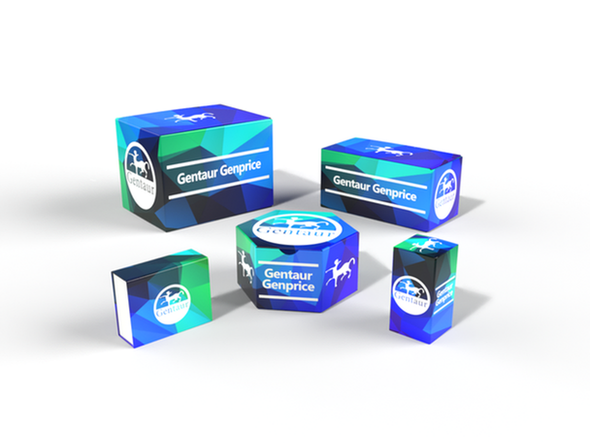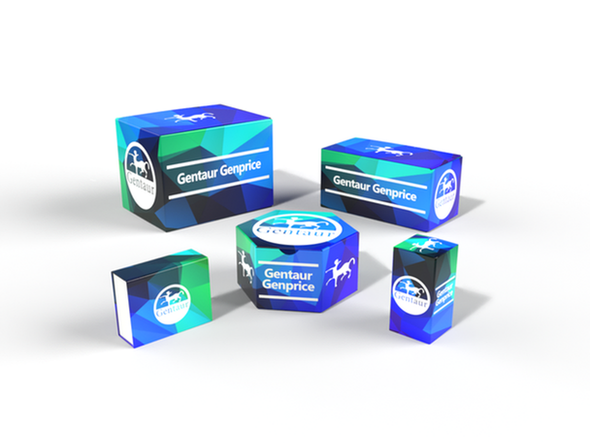LBD
LGG-1/Atg8 antibodies [APR33669G]
- SKU:
- LBD-APR33669G
- Availability:
- Usually ships in 5 working days
Description
LGG-1/Atg8 antibodies [APR33669G] | Gentaur UK, US & Europe Distribution
Product Category: Polyclonal Antibodies
Host: Rabbit
Species Reactivity: Caenorhabditis elega
Specificity: This lgg-1 antibody is generated from rabbits immunized with a KLH conjugated synthetic peptide between 20-55 amino acids from the center region of CAEEL lgg-1.
Cellular Localisation: Preautophagosomal structure. Cytoplasmic vesicle, autophagosome. Cytoplasmic vesicle, autophagosome membrane. Lysosome lumen. Mitochondrion. Cytoplasm. Cytoplasmic vesicle, phagosome membrane. Cell membrane; Lipid-anchor. Cell projection, dendrite. Perikaryon. Note=In embryos, diffuse cytoplasmic localization with some areas displaying a more punctate distribution (PubMed:19377305, PubMed:19167332, PubMed:24374177, PubMed:28806108, PubMed:20550938) . Specifically, upon fertilization localizes to autophagosomes around the male pronucleus (PubMed:24374177) . During the first embryonic divisions and after the 25-cell stage, localizes to a large population of autophagosomes, with another smaller population of autophagosomes containing both lgg-1 and lgg-2 (PubMed:24374177) Localization to autophagosomes is dependent on atg-7 (PubMed:24374177) Co-localizes with sepa-1 in cytoplasmic aggregates (PubMed:19167332, PubMed:28806108) . Partially localizes to the phagosome membrane of engulfed apoptotic cells (PubMed:22451698)
Molecular Weight: 14764
Clone: Polyclonal
Gene Name: lgg-1 {ECO:0000312|WormBase:C32D5.9}
Gene ID: 174050
Function: Ubiquitin-like modifier involved in the formation of autophagosomal vacuoles (autophagosomes) (PubMed:26687600) . When lipidated mediates tethering between adjacent membranes and stimulates membrane fusion during autophagy (PubMed:26687600, PubMed:21802374) . Recruits lipidated-lgg-2 to maturing autophagosomes (PubMed:12958363, PubMed:20523114, PubMed:26687600) . Acts in the aggrephagy pathway, which is the macroautophagic degradation of ubiquitinated protein aggregates, and preferentially interacts with autophagy proteins and substrates containing LIR motifs to mediate autophagosome formation and protein aggregate degradation (PubMed:26687600) . In particular, binds to components of the unc-51-atg-13 complex to regulate autophagosome formation and cargo sequestration (PubMed:26687600) . Required for the degradation of specific sepa-1- and sqst-1-containing protein aggregates during embryogenesis (PubMed:26687600) . Involved in allophagy, which is an autophagic process in which paternal mitochondria and organelles are degraded during fertilization, and moreover is required for the formation of lgg-2-positive allophagic autophagosomes in embryos (PubMed:24374177) . Involved in the clearance of apoptotic cells by promoting the delivery of engulfed apoptotic cells to the lysosome (PubMed:22451698) . Plays a role in the distribution and clearance of germ cell specific P-granules from somatic cells (PubMed:19167332) . Also plays a role in the autophagy- mediated degradation of ribosomal RNA and ribosomal proteins in lysosomes (PubMed:30102152) . Involved in xenophagy, the autophagy- mediated degradation of pathogens and pathogen products, such as toxins (PubMed:27875098) . Required for normal survival when exposed to pathogenic bacteria S.typhimurium probably by promoting autophagic degradation of intracellular S.typhimurium (PubMed:19667176) . Also plays a role in membrane-pore repair (PubMed:27875098) . Plays a role in mitophagy (PubMed:25896323) . Essential for dauer development and longevity, including longevity in response to moderate, short-term heat shock, also known as a hormetic heat shock (PubMed:12958363, PubMed:20523114, PubMed:28198373) .
Summary: Tissue Location: Expressed in PLML touch receptor neuron and in the ventral nerve cord (PubMed:17327275) . Expressed in AIY interneurons (PubMed:30880001) .
Form: Purified polyclonal antibody supplied in PBS with 0.09% (W/V) sodium azide. This antibody is purified through a protein A column, followed by peptide affinity purification.
Storage: Store at +4°C short term. For long-term storage, aliquot and store at -20°C or below. Stable for 12 months at -20°C. Avoid repeated freeze-thaw cycles.
Application: WB
Dilution: WB--1:1000
Synonyms: Protein lgg-1, lgg-1

![LGG-1/Atg8 antibodies [APR33669G] LGG-1/Atg8 antibodies [APR33669G]](https://cdn11.bigcommerce.com/s-1rdwiq712m/images/stencil/608x608/products/64812/65116/gentaur-genprice__26005.1661610467__29809.1661628092__75433.1661676199__77988.1661684280__64362.1661692443__60635.1661876868.png?c=1)




